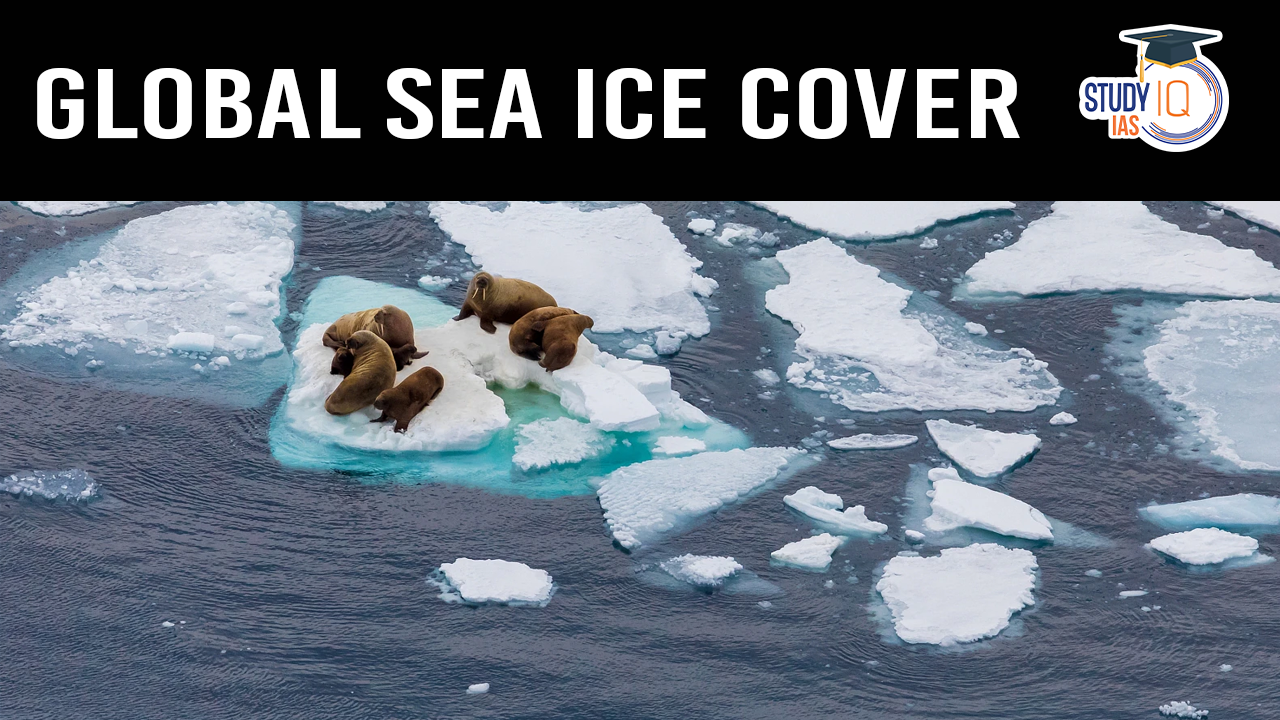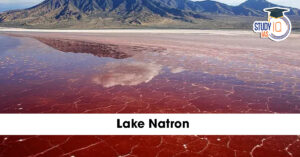Table of Contents
Context: Global Sea Ice Cover dropped to a record low of 15.76 million sq km in February 2025.
What is Sea Ice?
- Sea ice refers to free-floating ice in the polar regions, formed when ocean water freezes.
- It is different from: Icebergs, glaciers, ice sheets, and ice shelves, which originate from land.
- Seasonal Changes:
- Expands in winter and melts in summer.
- Some sea ice remains year-round.
Historical Trends in Sea Ice Decline
Arctic Sea Ice Loss
Shrinking at a rate of 12.2% per decade.
- Since the late 1970s: Arctic sea ice has been declining rapidly.
- An estimated 77,800 sq km of sea ice is lost every year.
- Current Situation: Arctic sea ice is at its lowest recorded extent for this time of year.
Antarctic Sea Ice Loss
- Different Trend Until 2015: Antarctic sea ice increased slightly year-on-year.
- 2014-2017: Antarctica lost 2 million sq km of sea ice, equal to four times the size of Spain.
- 2023: Antarctic sea ice reached historically low maximum levels.
- 2024-2025: Ice cover improved slightly from 2023 but still 55 million sq km below the 1981–2010 average.
What is Causing the Record-Low Ice Cover?
Arctic Factors
- Warmer ocean waters: Oceans are taking longer to cool, delaying sea ice formation.
- Storms in the Barents and Bering Seas: Thinner ice is more fragile and breaks apart easily.
- Higher-than-normal air temperatures: Particularly in Svalbard (Norway), and Hudson Bay (Canada).
Antarctic Factors
- Ice-breaking winds: Unlike the Arctic (surrounded by land), Antarctic sea ice is surrounded by the ocean, making it more mobile and thinner.
- Warmer air and water temperatures: More melting at the edges of the ice sheet (ice shelves).
Consequences of Declining Sea Ice
Accelerated Global Warming
- Less ice = more heat absorption:
- White sea ice reflects sunlight back into space.
- Darker ocean water absorbs more heat, leading to higher temperatures.
- Polar regions are warming faster than the rest of the world.
Impact on Ocean Currents & Global Climate
- Melting ice releases freshwater into the ocean.
- Lower salinity and density: Reduces the downward flow of surface water & Slows ocean overturning circulation.


 Places in News for UPSC 2026 for Prelims...
Places in News for UPSC 2026 for Prelims...
 Lake Natron: Location, Features, Wildlif...
Lake Natron: Location, Features, Wildlif...
 Erra Matti Dibbalu Added to UNESCO Tenta...
Erra Matti Dibbalu Added to UNESCO Tenta...

























